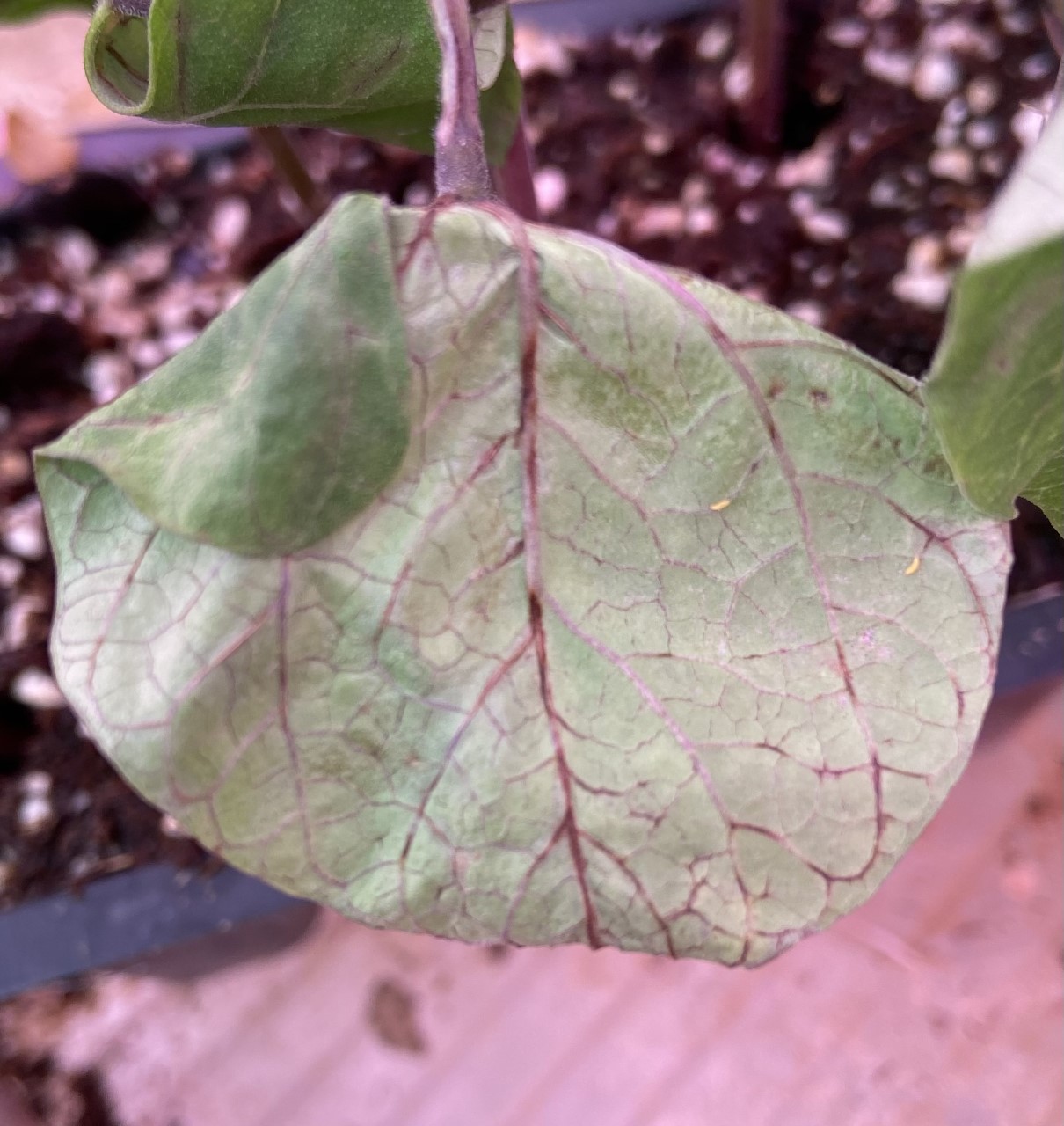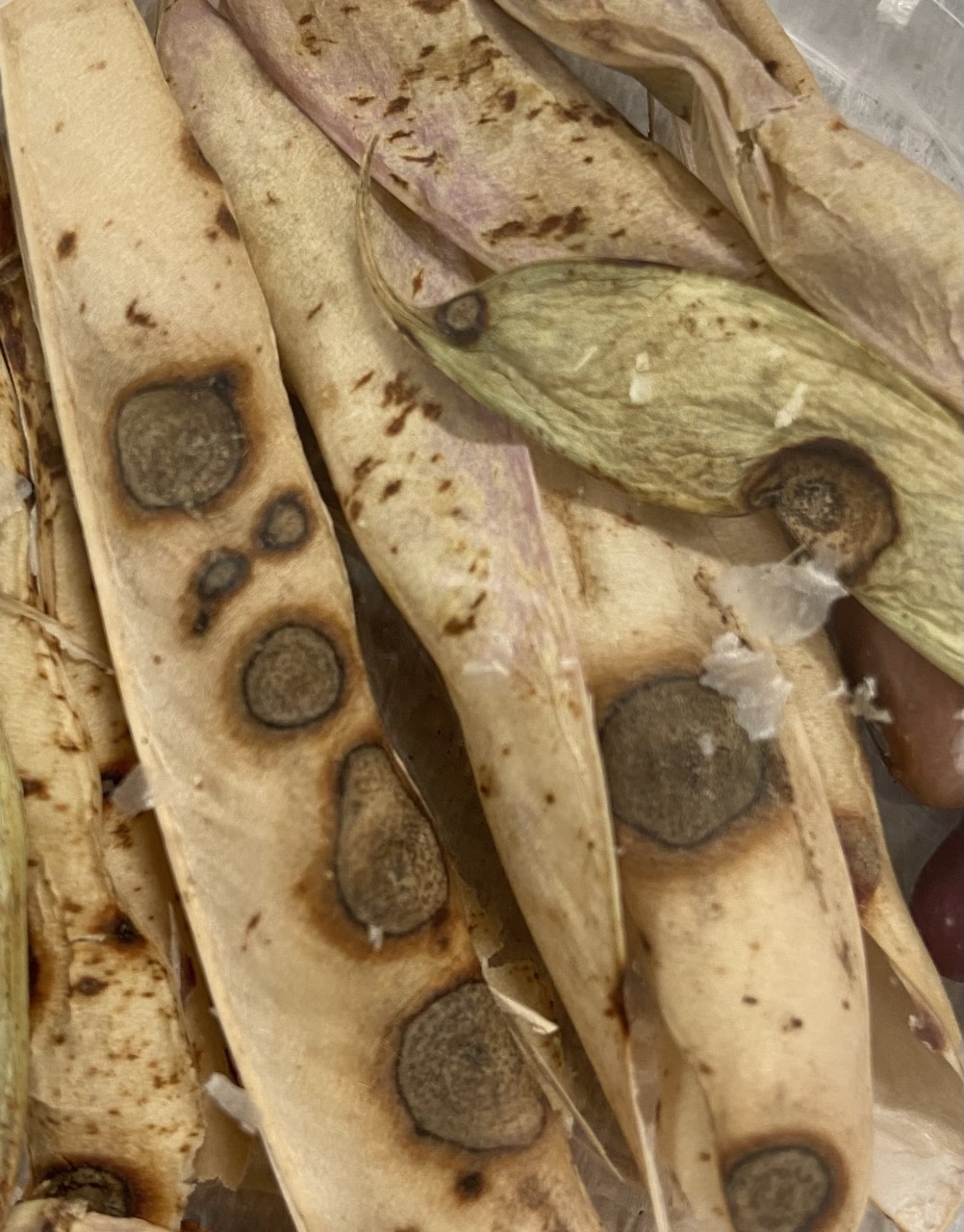Dry bean anthracnose identification and management
Common bean anthracnose is one of the most economically important diseases affecting yield. Early identification is integral to mitigating losses.

Dry bean anthracnose, caused by Colletotrichum lindemuthianum (Sacc. & Magn.), is a seed-borne disease and one of the most destructive pathogens affecting dry bean production, according to research from Broughton et al., 2003. It greatly reduces both seed yield and quality of dry beans under humid and cool conditions. While certified disease-free seed production and the use of resistant varieties have limited widespread outbreaks of the pathogen in Michigan, the disease still occurs annually (Figure 1). The isolates of anthracnose, hereafter referred to as races, are incredibly diverse and numerous. They are distinguishable only by their differing pathogenicity between dry bean varieties containing different resistance genes. Oftentimes varieties are bred for resistance with specific races in mind that are common to the area.
Anthracnose in Michigan
Three known races are present in Michigan: race 7, 73 and 109. Races are identified from each other by inoculating a panel of 12 dry bean varieties, known as differential cultivars (Table 1), according to research from Pastor-Corrales, M. A., “Standardization of differential varieties and race designation of Colletotrichum lindemuthianum.” Each variety has an assigned numerical value which is summed if the variety shows susceptibility to the inoculation. In addition to race identification, the panel also identifies what resistance genes can be deployed to avoid infection in the future. Race 7 and 73 are the most commonly occurring in the state and many resistant bean varieties are available for growers.
Race 109 is a new race to Michigan, first identified in 2017, and suspected to have come from Ontario. Race 109 has only been identified in isolated locations in Sanilac and Alcona counties since its first identification and was identified in 2021 in Alcona County (Figure 2). As the disease is highly transmissible, varieties with resistance are necessary to protect production. Three varieties have been identified as resistant to 109: ‘Black Bear’ and ‘Adams’, both black bean varieties, and ‘Eiger’, a great northern bean. The MSU Dry Bean Breeding Program has investigated and identified new sources of resistance to race 109 (Figure 3). A resistance gene has been identified in the cultivar ‘TU’ and genetic markers are in development to be used to breed varieties with resistance to all present races. A table of varieties evaluated by the Michigan State University Dry Bean Breeding Program for resistance to the three races is provided at the end of the document (Table 2).


Disease symptoms
All races of anthracnose have identical disease symptoms. Each race will have a different list of susceptible and resistant cultivars from the differential table. The disease is identifiable through the rust-brown to black lesions on the leaf veins, petiole, and underside (Figure 4). As the disease progresses through the vascular system it creates lesions on the stem, also colored rust-brown or black, which will enlarge to round sunken eyespots. These lesions will also appear on the pods (Figure 5). The fungal fruiting bodies that contain spores may also be visible in the eyespots, appearing pinkish-colored.

Anthracnose can lead to premature defoliation, early flower and pod drop, stem girdling, and plant death. Symptoms of anthracnose are visible only after the disease is in an advanced stage, as soon as three days after infection. Growers should scout their plants thoroughly if they notice any abnormal appearance or behavior.

Discoloration and deformation will occur in the seeds as shown in Figure 6. If these symptoms are present, then it is extremely likely the disease has penetrated through the seed coat. Once the disease has established itself in the seed, it can be carried to new locations. Infected seed is the primary source of infection by which anthracnose spreads and new races are introduced.

Control
Planting certified disease-free seed and using varieties resistant to the races known to be present in the field is the best approach to prevent crop losses due to anthracnose.
A minimum two-year rotation out of beans is recommended as anthracnose spores overwinter in the soil and can survive on average two to three years with previous documentation noting spores surviving up to five years. Tillage helps place infected crop residue in contact with soil, as exposure to moisture hastens the decay of spores. Races 7 and 73 are present throughout the state and race 109 has thus far been isolated to Alcona County and the area surrounding it as well as in Sanilac County in 2019.
If identified in the field, foliar fungicides can limit the spread of anthracnose. However, early identification is a major determinant of the success of application as fungicides only inhibit spore germination and will not have a curative effect once plants are infected. Established infections are more difficult to control and may require additional fungicide applications. Anthracnose spores are readily transferable through mechanical movement. A small infection can spread from equipment, people, and animals moving through affected areas. Infected fields should be worked last as to not spread spores to healthy plants. Additionally, spraying, cultivation and other field activities should not be performed when dew is present on the plants as free water facilitates spore movement. Infected plants should be plowed under at the end of the season and equipment thoroughly cleaned to avoid further infections.
For further information regarding identification and management, see the Michigan State University Extension Dry Beans page.
|
Table 1. Differential cultivar panel proposed by Pastor-Corrales (1991) |
|||
|
Differential cultivars |
Gene Pool |
Resistance Gene |
Numerical Value (2n-1) |
|
Michelite |
MA |
Co-11 |
1 |
|
Michigan Dark Red Kidney |
A |
Co-1 |
2 |
|
Perry Marrow |
A |
Co-13 |
4 |
|
Cornell 49-242 |
MA |
Co-2 |
8 |
|
Widusa |
A |
Co-15 |
16 |
|
Kaboon |
A |
Co-12 |
32 |
|
Mexico 222 |
MA |
Co-3 |
64 |
|
PI 207262 |
MA |
Co-33; Co-43 |
128 |
|
TO |
MA |
Co-4 |
256 |
|
TU |
MA |
Co-5 |
512 |
|
AB136 |
MA |
Co-6 |
1024 |
|
G2333 |
MA |
Co-33; Co-42; Co-52 |
2048 |
|
Table 2. Reactions of dry bean varieties to three races of anthracnose (Colletotrichum lindemuthianum) |
||||
|
|
Reaction to |
|||
|
Races |
7 |
73 |
109 |
|
|
Class and Variety |
Occurs state-wide |
Occurs state-wide |
Isolated to Alpena and Sanilac Counties |
|
|
Black |
|
|
|
|
|
|
Zenith |
R |
R |
S |
|
|
Adams |
R |
R |
R |
|
|
Eclipse |
S |
S |
S |
|
|
Black Bear |
R |
R |
R |
|
|
Black Beard |
S |
S |
S |
|
|
Zorro |
R |
S |
S |
|
|
Nimbus |
R |
S |
S |
|
Navy |
|
|
|
|
|
|
Alpena |
S |
S |
S |
|
|
HMS Medalist |
R |
S |
S |
|
|
Merlin |
R |
S |
S |
|
|
ND Polar |
S |
S |
S |
|
|
Vigilant |
- |
- |
S |
|
Kidney |
|
|
|
|
|
|
Red Hawk |
R |
R |
S |
|
|
Coho |
S |
R |
S |
|
|
Red Cedar |
S |
R |
S |
|
|
Snowdon |
S |
R |
S |
|
|
ND Whitetail |
S |
- |
S |
|
|
Montcalm |
S |
- |
S |
|
Great Northern |
|
|
|
|
|
|
ND Pegasus |
R |
S |
S |
|
|
Eiger |
R |
R |
R |
|
|
Aries |
S |
R |
S |
|
|
Powderhorn |
R |
S |
S |
|
|
Taurus |
R |
S |
S |
|
Pinto |
|
|
|
|
|
|
Charro |
R |
S |
S |
|
|
Eldorado |
R |
S |
S |
|
|
Lapaz |
R |
S |
S |
|
Pink and Red |
|
|
|
|
|
|
Cayenne |
R |
S |
S |
|
|
Viper |
R |
S |
S |
|
|
Coral |
R |
S |
S |
|
|
Merlot |
R |
S |
S |
|
|
Rosetta |
R |
S |
S |
|
Yellow |
|
|
|
|
|
|
Yellowstone |
S |
R |
S |
R = Resistant; S = Susceptible; - = Not tested for the race



 Print
Print Email
Email